
Catalog excerpts
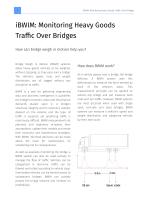
iBWIM: Monitoring Heavy Goods Traffic Over Bridges iBWIM: Monitoring Heavy Goods Traffic Over Bridges How can bridge weigh in motion help you? Bridge Weigh in Motion (BWIM) systems allow heavy goods vehicles to be weighed, without stopping, as they pass over a bridge. The vehicle's speed, class and weight distribution are all logged without any disruption to traffic. BWIM is a tool for gathering engineering data and business intelligence: it quantifies the bridge's economic value and the physical demands placed upon it. A bridge's structural integrity and its economic viability depend on...
Open the catalog to page 2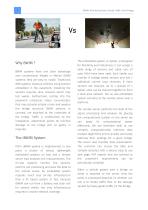
Why BWIM ? BWIM systems have one clear advantage over conventional Weight in Motion (WIM) systems: they are easy to install. Traditional WIM systems measure vehicles using sensors embedded in the pavement. Installing the sensors requires lane closures which may last weeks. Furthermore, cutting into the pavement introduces stress concentrators that may actually initiate cracks and weaken the bridge structure. BWIM sensors, in contrast, are attached to the underside of the bridge. Traffic is undisturbed by the installation, attachment points do minimal damage to the bridge and no gantry is...
Open the catalog to page 3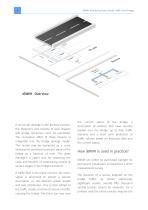
If structural damage is the primary concern, the frequency and severity of axle impacts and bridge harmonics must be quantified. The cumulative effect of these impacts is integrated into the bridge damage model. This model may be expressed as a curve showing the predicted economic value of the bridge as a function of time. This gives managers a useful tool for assessing the costs and benefits of undertaking repairs at various stages in the bridge's evolution. If traffic flow is the major concern, the strain signal is processed to extract a vehicle description, i.e. the vehicle's speed,...
Open the catalog to page 4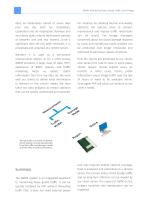
iBWIM: Monitoring Heavy Goods Traffic Over Bridges days: an observation period of seven days plus one day each for installation, calibration and de-installation. Railways and secondary roads require observation periods For instance, by collating diurnal and weekly statistics, the optimal times to conduct maintenance and impose traffic restrictions can be found. For bridge managers of between one and two months. Once a significant data set has been amassed, it is processed and analysed at a remote server. concerned about structural damage imposed by cyclic and exceptional loads, analysis can...
Open the catalog to page 5
Case Studies
Open the catalog to page 6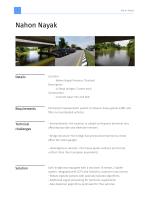
Nahon Nayak Nahon Nayak Location: Nahon Nayak Province, Thailand Description: 2x Road bridges, 2 lanes each. Construction: Concrete Span 13m and 20m Permanent measurement system to observe heavy goods traffic and filter out overloaded vehicles. • Environmental—the location is subject to frequent torrential rain, affecting top-side axle detection sensors. • Bridge structure—the bridge has pronounced harmonics, these affect the strain gauges. • Heterogenous vehicles—Thai heavy goods vehicles are far less uniform than their European equivalents. Each bridge was equipped with a two lane, 16...
Open the catalog to page 7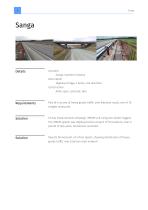
Location: Sanga, Southern Estonia Description: Highway bridge, 2 lanes, one direction. Construction: Multi span, concrete, 36m Part of a survey of heavy goods traffic over Estonian roads, one of 16 bridges measured. 10 day measurement campaign, iBWIM unit using two Spider loggers. The iBWIM system was deployed twice at each of 16 locations, over a period of two years. No failures recorded. Results formed part of a final report, showing distribution of heavy goods traffic over Estonian road network.
Open the catalog to page 8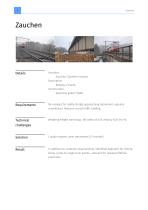
Location: Zauchen, Southern Austria Description: Railway, 2 tracks. Construction: Steel box girder (1908) Re-analysis for safety. Bridge approaching retirement, requires surveillance. Measure actual traffic loading Weighing freight trains (typ. 180 axles) at full velocity (120 km/h). 1 spider system, semi-permanent (12 months) In addition to customer requirements, identified approach for linking stress cycles to single train events--relevant for residual lifetime prediction.
Open the catalog to page 9

